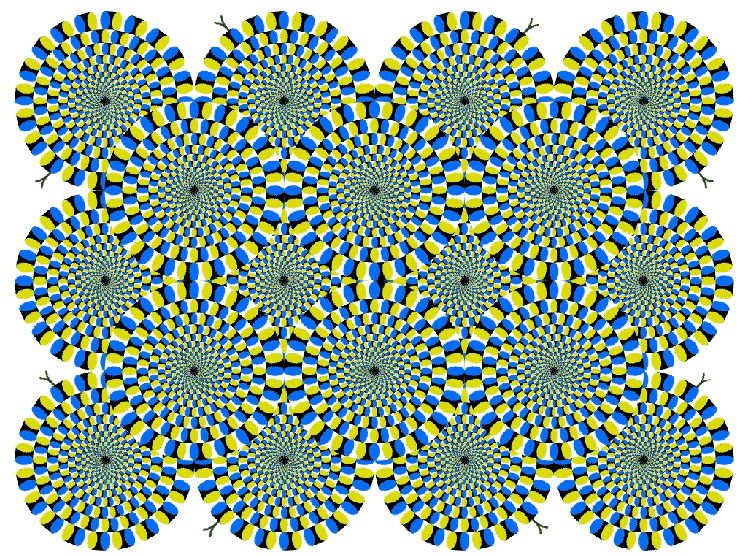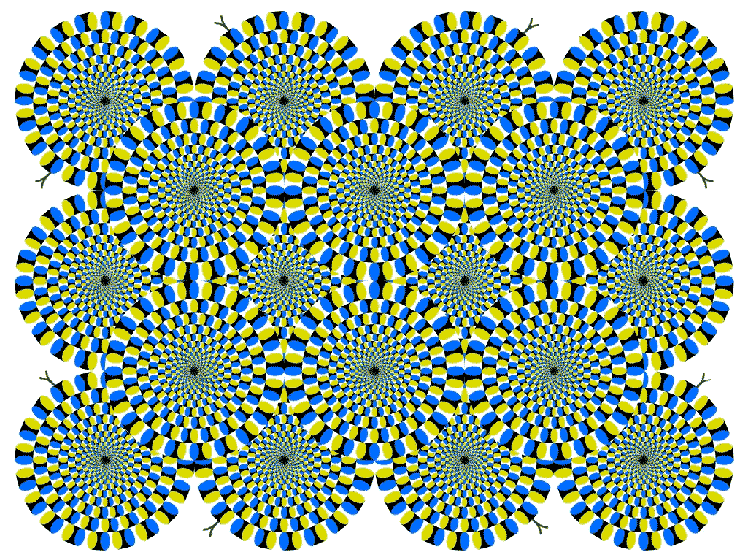
The Answer is:
The wheels in this image appear to move – even though in reality they are utterly stationary.
The illusion is so strong that many people feel nauseous if they look at the image for more than a few moments – and may feel ill for some time afterward.
Notice that only those wheels in your peripheral vision appear to rotate. When you look directly at one of the wheels, you can’t ‘catch’ it moving!
Until very recently scientists had struggled to explain this and other ‘anomalous motion’ illusions. However, a paper published in June 2005 has begun to shed light on how your brain might be interpreting this illusion.
Each wheel in the illusion is made up of 4 coloured elements: black, blue, white and yellow – in that order.
It would seem the critical feature for making the wheels rotate, is the differences in the levels of luminance between adjacent elements.
This means that the illusion also works well when printed in black and white.
What’s happening in your brain?
For many years scientists have known we have specific neurons in our brains that fire when we look at something moving in a particular direction. These are called direction-selective neurons.
When scientists examined this illusion they found something quite remarkable.
Direction-selective neurons in the visual cortex begin firing when looking at this illusion. This is particularly exciting because up until now, scientists thought this type of brain neuron could only be activated by seeing something that was really moving (either on-screen or in the real world).
They think that the cells that detect motion lower down the visual system have actually interpreted the rollers as if they were really moving.
This amazing illusion has been created and refined by Japanese vision expert Akiyoshi Kitaoka




